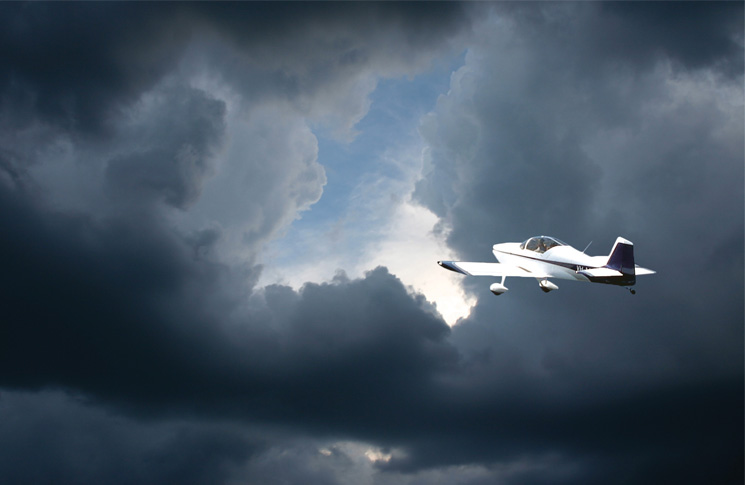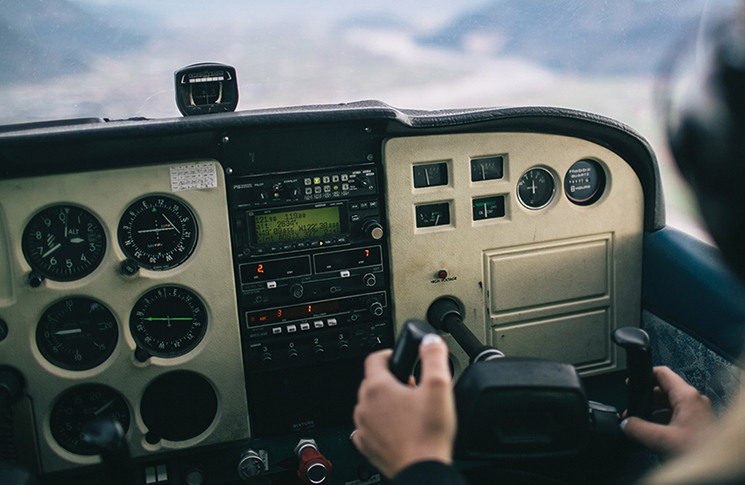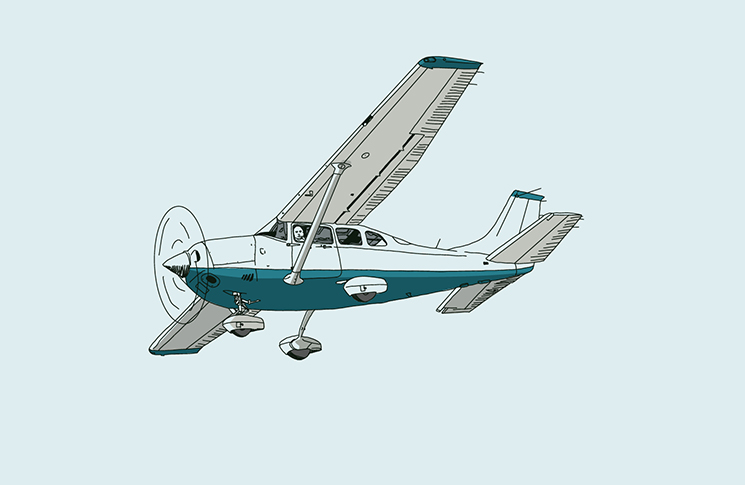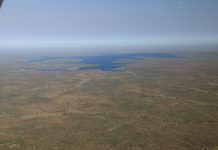Lee Ungermann, Former Manager Sport Aviation at Civil Aviation Safety Authority
This precautionary tale is one of what happens when experience, complacency and rapidly changing environments conspire against you to become a lethal combination. And at the time, no one was more surprised than me.
As a busy RAAus Chief Flying Instructor (CFI) L2 and commercial pilot, I had never had the opportunity to attend the national RAAus fly in. Somehow, every Easter when NATFLY was on, someone always wanted to book in for solid training days to finish their certificate. Being self-employed, that was kind of hard to turn down.
However, this particular Easter was looking good as I packed and prepared the aircraft for the flight. I was fortunate to be taking a relatively new aircraft from a local manufacturer in Ballina to NATFLY for the distributor display, and was excited with the prospect of attending the seminars and catching up with friends. My good friend was also coming with me, so we were both looking forward to the adventure.
The planning of the flight was meticulous, the stops were scheduled, the weather was looking great west of the range and we were set. Like most easterners, crossing the Great Divide to get to the great open westerly plains of safety is often the first challenge. And these ranges west of Ballina had claimed more than their fair share of lives.
Despite the optimistic outlook, the weather forecast alluded to bad weather coming in from the east later in the day. An early morning departure would put all that behind us and many track miles from our first destination.
The morning dawned clear and crisp; the aircraft was loaded, fuelled and we were ready to depart. Something was not right with the weather however, looming clouds to the right of our track indicated that the weather did not appear as forecast.
While the track to the west remained clear, we departed Ballina for Tenterfield determined to get west of the range as early as possible and into the blue sky promised along our track.
Having operated in the area for a number of years, I was intensely familiar with the weather of the region, so much so that difference in the weather was more of an anomaly than a concern at first; however, once west of the range I felt that the rest of the trip would be smooth sailing.

After tracking past Lismore on climb to 4500 ft, the temperature and pressure gauges were in the green, and the cloud had thickened with isolated cumulus beginning to tower. The weather to the north began to look decidedly threatening and appeared to be sweeping in from the northwest rather than northeast as predicted.
Overhead Casino the cloud had thickened considerably and appeared decidedly ominous to the north. Towering cumulus began to materialise as I elected to climb to 6500 ft approaching the range; our weight and reducing air density slowed the climb rate and our ground speed in turn.
I began to alter track left and right in the climb to manoeuvre around the rapidly developing convection. Low-level scud swept in underneath as we appeared to hang motionless in the sky watching the rapid development around us. The ground was all but covered as we continued to climb through 6500 ft en route to amended level 8500 ft.
The rate of convective development around us was beginning to get concerning. Monitoring engine temp and pressure and with the engine getting hot in the extended climb, our vertical climb speed had dropped to a mere 250 ft per minute. The situation was becoming uncomfortable, and a quick glance behind me revealed that the visibility had gone.
We traced along a rising cloud bank approaching two converging towers of cloud; and passing 8500 ft we had no option but to continue the climb to remain visible and attempt to squeak through the cloud valley to the clearer air on the other side.
With decreasing air density, climb had slowed considerably again. Our options were becoming limited. With the engine temp approaching the red, we continued to the cloud valley.
Passing 9500 ft, we approached the towering cumulus only to come to the stark realisation that it was climbing faster than we were. Like slow motion in a Matrix movie, we looked around—only towering cumulus out either window, no option to turn back, high-nose attitude and a rapidly over-temping engine. With only blue sky ahead, we approached the rising pass.
I could hear only my own heartbeat in my ears as the windscreen misted slightly and then suddenly went white. To understand what this is like watch CASA Safety Video–‘178 seconds to live’ (above).
The feeling is indescribable when you commit such a cardinal aviation sin. My immediate thoughts turned to those I might leave behind, my friend’s safety, and what every student I had ever taught would think of their CFI. I was no longer the teacher; I was a student in life and death.
For what seemed like an eternity the screen remained misty white, the airframe buffeting within our milky new environment. I could not believe what I had allowed to happen.
My mind raced—do nothing, do something! Suddenly the veil had lifted, and we were reborn into open sky with would what could only be described as a second chance. There was no discussion on what had happened as we identified our emergency descent route, lowered the nose and hugged the building cumulus as we tracked around the wall of cloud and beelined it for Casino.
Safely on the ground, after the proverbial relief only a toilet stop brings after such an event, and trying to drink coffee from a cup I couldn’t hold due to shaking so much, we discussed what had just happened.
The smell of fresh rain hit me as I looked up from what coffee I had managed to retain in the cup. The encroaching line of ominous weather had been racing to meet us. We had scrambled to keep ahead of it and make it back to Ballina. We’d made a hasty departure and a straight-in approach to runway 06 just ahead of the front line. On short final, the heavy rain caught up with us, effectively blanking all forward visibility, transferring vision out the side window. Given the circumstances, we made a somewhat graceful landing. It then rained solidly for three days.
I remember every bit of that experience, from the paint on the dials, to my grip on the throttle, to the tension in my friend’s voice. To this day, I still react physically at the very thought of that moment, when I let my experience, complacency and decision making be compromised in a potentially lethal combination.
As I write this, I am on a commercial flight on descent into Brisbane, flying over the very spot where I almost became the statistic I always taught my students not to be. What I learned that day about human factors is something that cannot be taught, and reflecting on that experience, I can only come to the realisation that we were lucky. I made a lot of bad decisions that day fuelled by ego and complacency. My hope is that this precautionary tale serves as a reminder that no matter how much experience you have, overconfidence in your aircraft and your own ability breeds complacency, creating a chain of events from which there is no recovery, no matter how good you think you are.





That’s a great article, now apply that to a CSF where the ‘get-there-itis’ would be high & we can see why CASA want higher standards & I for once support them I’d hate to imagine how many of these stories are actually out there? 1000’s !!
Absolutely correct The two fatal Angel Flight prangs succumbed to exactly this pressure & AOPA & Angel Flight did nothing positive or proactive.
Thank you so much for sharing the wisdom of (albeit a terrifying) experience.
Yes, I’ve been there too. Only once but once is enough. Good autopilot is a wise investment. But make sure you know how to use it. Mine has a panic button. Even if it’s not engaged push the button and it levels your wings and synchronises your course and altitude. Also it saves heaps of fuel by keeping you on track and eases your workload to make the journey more enjoyable even in VMC
Thank you for your honest sharing of this. It is the oldest tale in the book but it is easy having never experienced it to imagine that pilots who do enter IMC inadvertently are negligent cowboys. I think this article makes the point that it COULD happen to ANY of us, and increases the awareness. We need more like this. I concur with the autopilot comment from Simon – the LVL button has no doubt saved lives.
Thank you!
I felt tense just reading this. Thank you for sharing your story and of course the fact you lived to tell the tale serves as a timely reminder to all of us that fly “Take no risks and err on the side of caution”